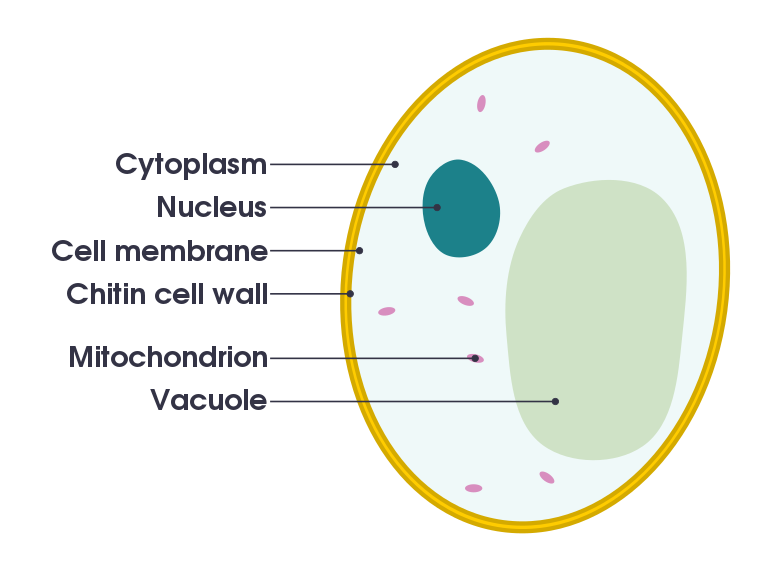The cytoplasm is jelly-like semi-fluid, containing the cytoplasmic matrix, cell organelles, and cell inclusions. The cytoplasmic matrix (the cytosol) is a crystal-colloidal complex comprising 90% water. Matrix contains various biomolecules, like minerals, sugars, amino acids, vitamins, proteins, enzymes, etc..
Index
History
Robert Hooke first observed the cytoplasm in 1665, and the name was given in 1863 by Rudolf von Kolliker.
Structure
It consists of three major elements-
- Cytosol: This is the part of cytoplasm which is not contained within membrane-bound organelles . It takes up most of the cell’s space (70%). The plasma membrane encloses the lipid bilayer. Various biomolecules, like minerals, sugars, amino acids, vitamins, proteins, enzymes, etc., are suspended in this matrix.

- Cell Organelles: These are subcellular structures with characteristic morphological forms, distinctive chemical compositions, and definite functions. These organelles can function in vitro, provided optimal conditions are provided to them. A cell contains several organelles like Endoplasmic Reticulum, Golgi Complex, Vacuoles, Lysosomes, Mitochondria, Plastids, Ribosomes, Microbodies, etc.
- Cytoplasmic inclusions: These are known as ergastic bodies, they are cells’ non-living substances. These can be classified into reserve food, excretory or secretory products, and mineral matter.
Functions
- Raw Materials: It contains many dissolved or suspended biomolecules. These biomolecules serve as raw materials for various biochemical reactions.
- Exchange: Vascular structures do not directly connect to the organelles. The exchange of materials takes place via this jelly like fluid.
- Skeletal Framework: it provides size and shape to the cell.
- Biosynthesis: It is the site of synthesis of many biochemicals like fats, proteins, carbohydrates, coenzymes, etc.
- Cytoplasmic Streaming: It is in motion inside the cell. This speeds up the transportation and distribution of material inside the cell.
Related Topics:
Questions
1. What is cytoplasm?
It is jelly-like semi-fluid, containing the cytoplasmic matrix, cell organelles, and inclusions.
2. Who discovered cytoplasm?
Robert Hooke first observed the it in 1665, and the name was given in 1863 by Rudolf von Kolliker.
FAQs
The protoplasm is the cell’s living part, surrounded by the plasma membrane.
Cytoplasm and protoplasm are almost similar and the words are used interchangeably. Academically, the cytoplasm is all the contents inside the cell membrane, excluding the nucleus whereas protoplasm includes cytoplasm and the nucleus of the cell.
It provides raw materials for various biochemical reactions and acts as a medium of transport for various cell organelles.
The matrix (the cytosol) is a crystal-colloidal complex comprising 90% water. Various biomolecules, like minerals, sugars, amino acids, vitamins, proteins, enzymes, etc., are found suspended in the matrix.
It consists of three major elements- the Cytosol (or the Cytoplasmic Matrix), Cell Organelles, and Cytoplasmic inclusions.
